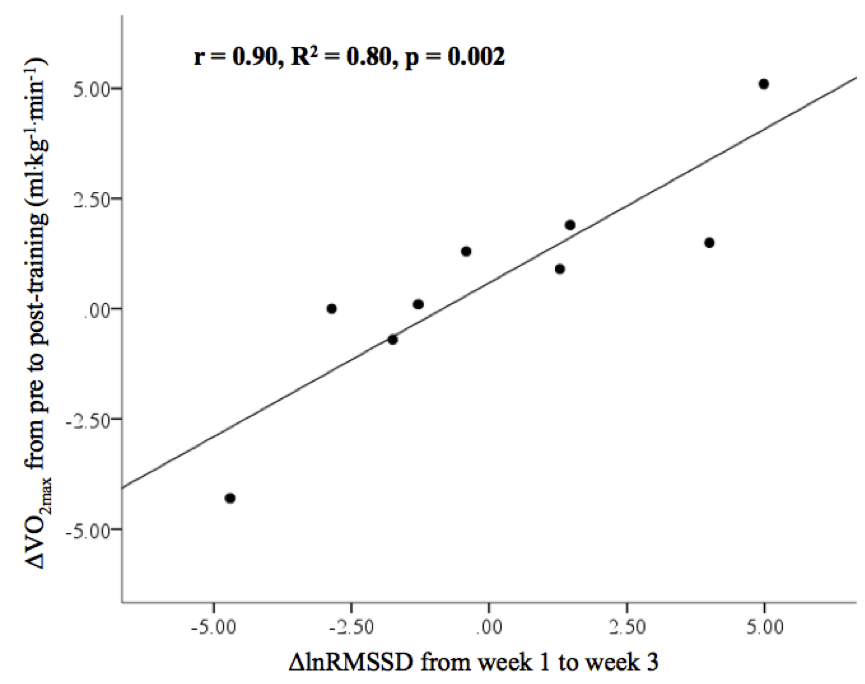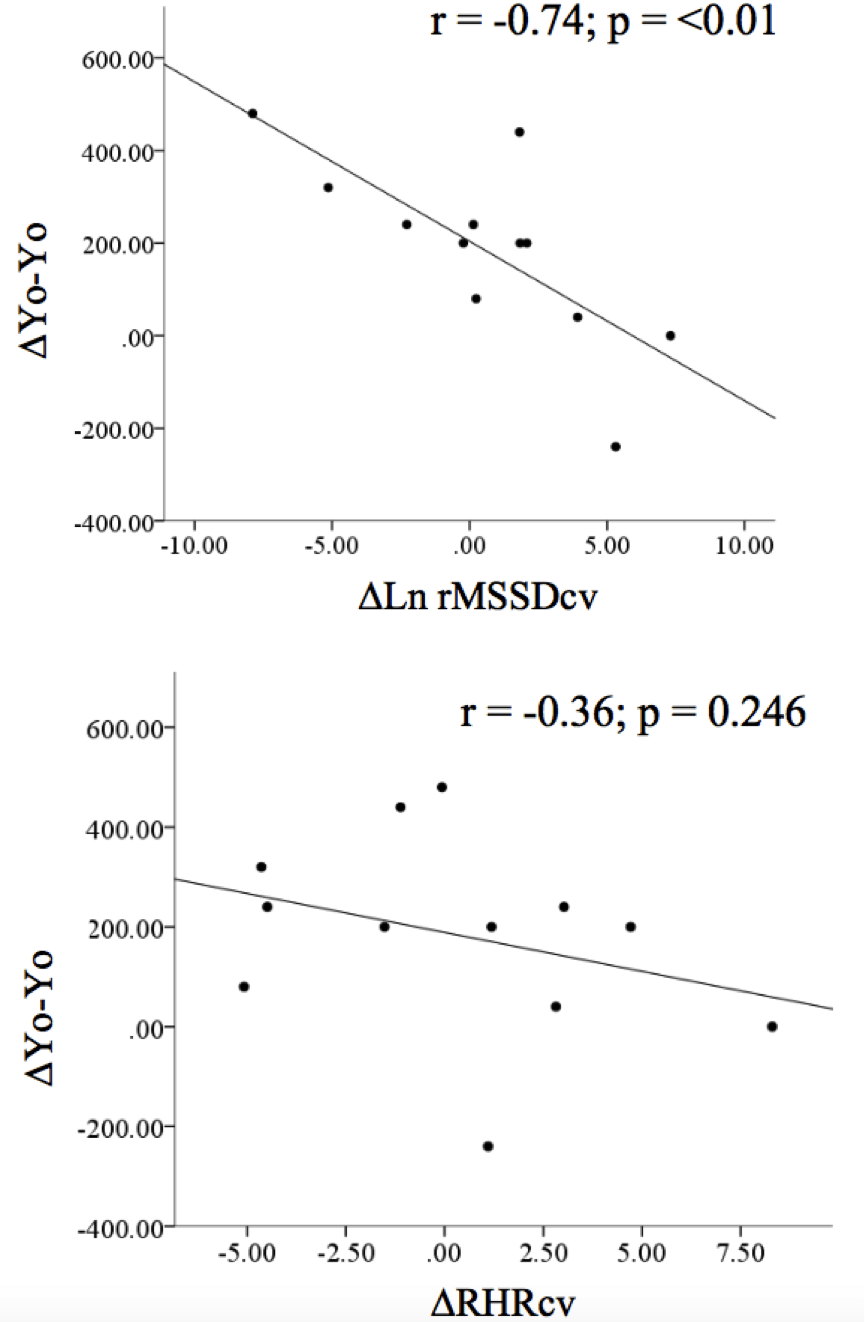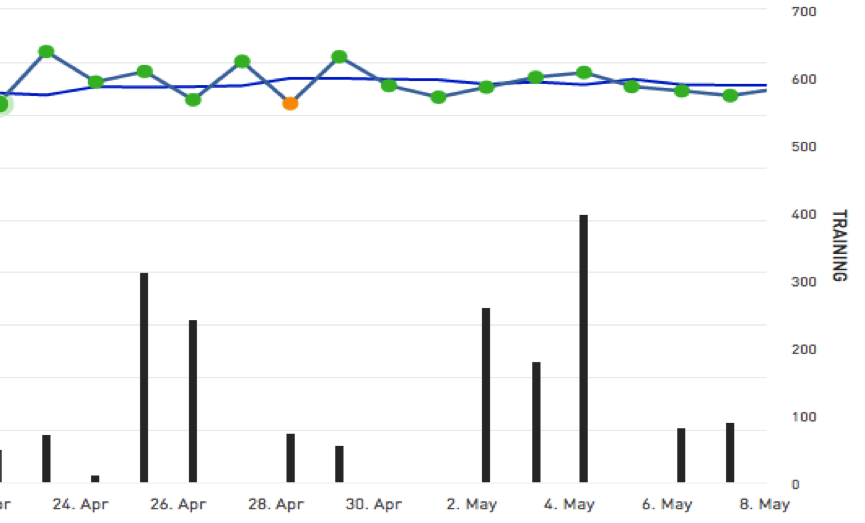Who, what and why?
The majority of HRV studies to date have used endurance athletes, partly because treadmills and spin bikes are readily available in every sports science lab, and partly because runners are cyclists are perfectly willing to bury themselves on a regular basis as it’s what they consider to be ‘fun’.
So it makes a welcome change to see researchers Andrew Flatt and Dr Mike Esco at the University of Alabama have devised some elegant studies to assess how individual members of a collegiate soccer squad were adapting to a uniform training regime, and to use HRV data captured during the first 3 weeks of an off season program to see if they could predict how the individual player’s fitness would evolve.
What did they do?
In the first study, 9 female collegiate soccer players engaged in an 11 week training program with coach supervised soccer practice 3x per week and resistance + aerobic conditioning twice per week.
Their aerobic fitness, VO2 max, was assessed at the start and also following the complete 11-week program using a treadmill test. They also had their HRV measured (LnRMSSD, ) every morning at wake during weeks 1 and 3 of the program. The hypothesis was that changes in HRV between weeks 1 and 3 might predict changes in aerobic fitness over the entire 11weeks.
In the second study, they looked at changes in intermittent running performance in 12 soccer players (the Yo-Yo test) and compared it to HRV data gathered during the first 3 weeks of a 5 week program
What did they find?
In the first study, although they found no statistical mean differences at group level, individual changes revealed a very high degree of correlation (r2=0.8) between initial changes in HRV and eventual changes in VO2 max.

In the second study, they were more interested in what the day to day variation (coefficient of variation, CV%) in both HRV and resting HR could tell about the players’ ability to cope with, and improve from the group training program.
They found a large negative correlation between the change in weekly coefficient of variation (LnRMSSD CV%) in HRV over the first 3 weeks, and Yo-Yo test performance over the full 5 weeks.
In other words, a decrease in the day to day variation in HRV predicted an improvement in intermittent running performance. On the other hand they did not find a similar relationship for the CV (or mean) of resting HR.

What does it mean?
The first study continues the robust line of work, which has showed almost uncanny relationships between changes in HRV and aerobic performance.
This is directly applicable to anyone training for competition or even just general health, and suggests that if your HRV baseline is not improving after a few days rest, then either an aspect of lifestyle is holding you back, or the training program is not / no longer effective for you.
The second study is in some ways harder to interpret, but the researchers’ view is that a decreasing day to day variation in HRV indicates that favorable adaptation is taking place and the player or athlete is able to cope with the demands placed upon them. Another example below, taken from the ithlete Pro timeline shows this effect in action. Towards the end of April, the daily variation in HRV is relatively high, whilst this variation reduces in early May, indicating that training is disturbing homeostasis (the body’s steady state) to a lesser extent. The baseline (blue line) has also risen slightly indicating an improvement in aerobic fitness.

Taken together with the first study, a well-designed training program for an individual should show initially high day to day variation, which decreases over the period of 3-4 weeks and the HRV mean (baseline) should increase over the same period. The findings of these studies signify that we are getting ever closer to automated training prescription which are optimized for an individual whether solo or team sports squad member.
Study 1:
Immediate changes in heart rate variability relate to aerobic adaptations following training in female collegiate soccer players Esco M., Flatt A. Presented at NSCA July 2015
Study 2:
Researcher Andrew Flatt has also summarised this paper:
